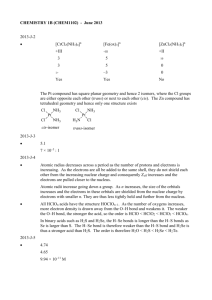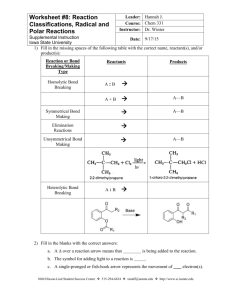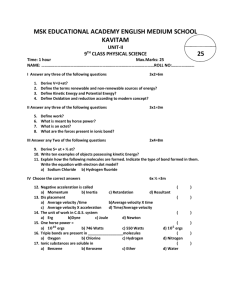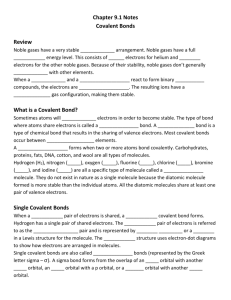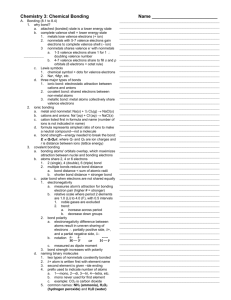Learning Targets Unit 4 Bonding
advertisement
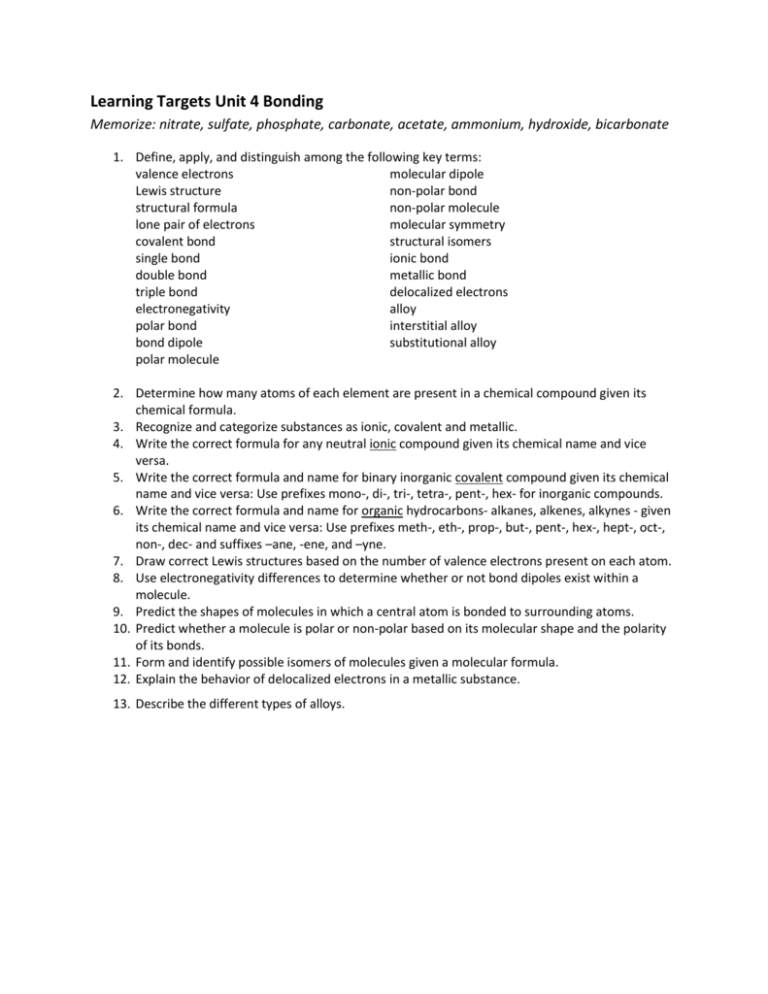
Learning Targets Unit 4 Bonding Memorize: nitrate, sulfate, phosphate, carbonate, acetate, ammonium, hydroxide, bicarbonate 1. Define, apply, and distinguish among the following key terms: valence electrons molecular dipole Lewis structure non-polar bond structural formula non-polar molecule lone pair of electrons molecular symmetry covalent bond structural isomers single bond ionic bond double bond metallic bond triple bond delocalized electrons electronegativity alloy polar bond interstitial alloy bond dipole substitutional alloy polar molecule 2. Determine how many atoms of each element are present in a chemical compound given its chemical formula. 3. Recognize and categorize substances as ionic, covalent and metallic. 4. Write the correct formula for any neutral ionic compound given its chemical name and vice versa. 5. Write the correct formula and name for binary inorganic covalent compound given its chemical name and vice versa: Use prefixes mono-, di-, tri-, tetra-, pent-, hex- for inorganic compounds. 6. Write the correct formula and name for organic hydrocarbons- alkanes, alkenes, alkynes - given its chemical name and vice versa: Use prefixes meth-, eth-, prop-, but-, pent-, hex-, hept-, oct-, non-, dec- and suffixes –ane, -ene, and –yne. 7. Draw correct Lewis structures based on the number of valence electrons present on each atom. 8. Use electronegativity differences to determine whether or not bond dipoles exist within a molecule. 9. Predict the shapes of molecules in which a central atom is bonded to surrounding atoms. 10. Predict whether a molecule is polar or non-polar based on its molecular shape and the polarity of its bonds. 11. Form and identify possible isomers of molecules given a molecular formula. 12. Explain the behavior of delocalized electrons in a metallic substance. 13. Describe the different types of alloys.




